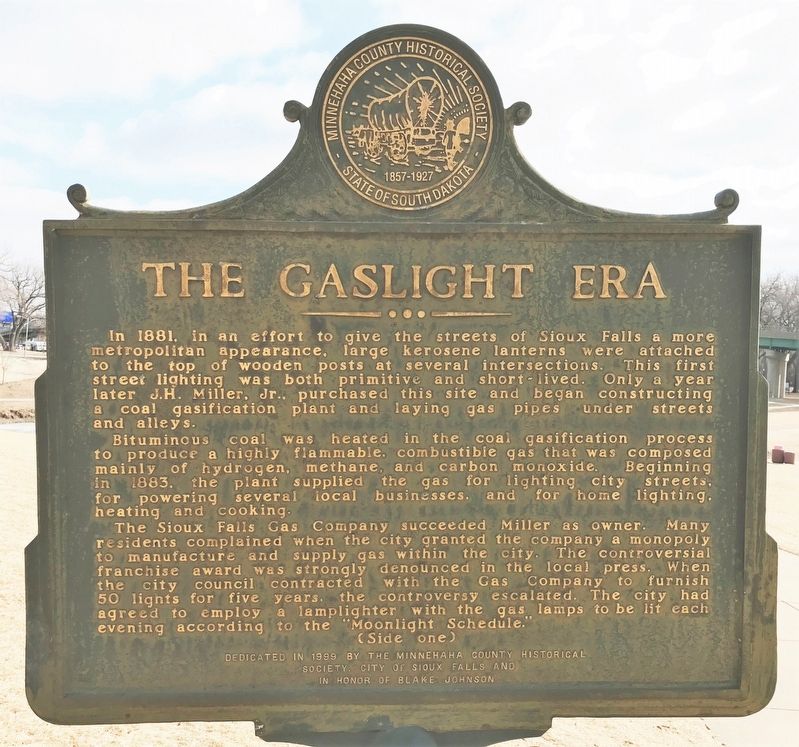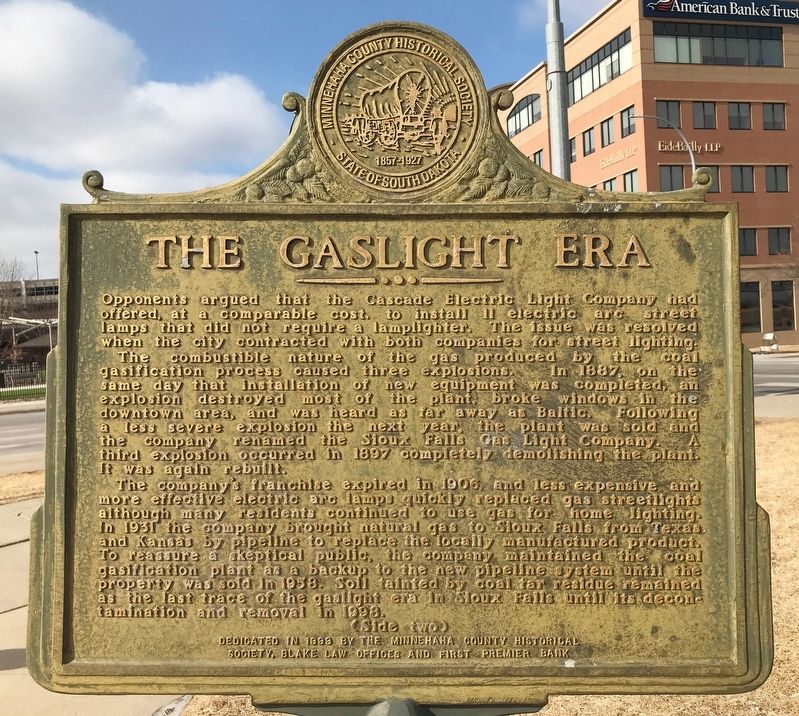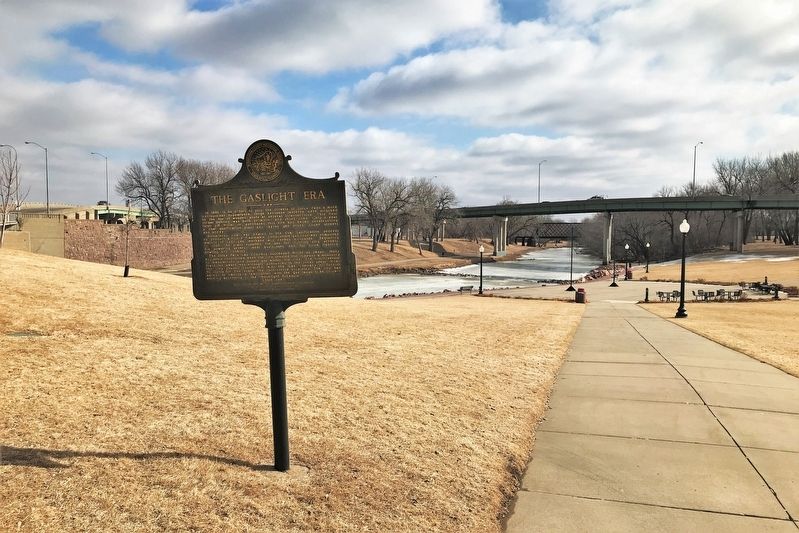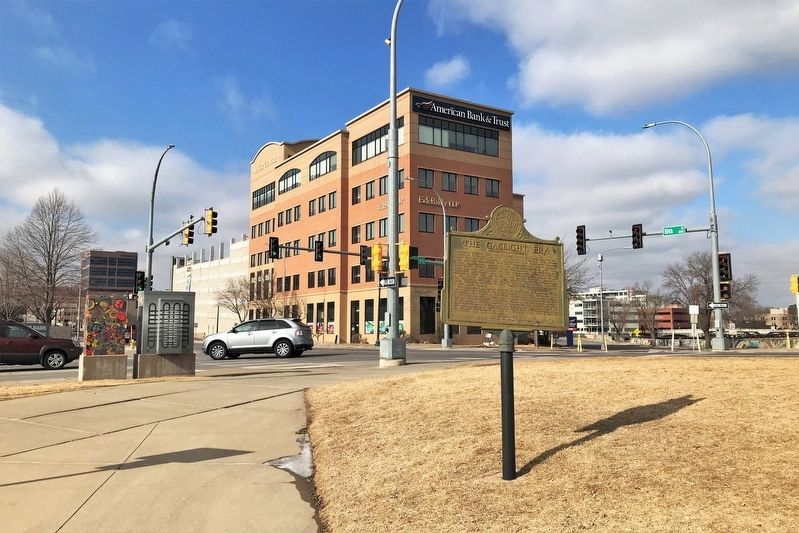Downtown in Sioux Falls in Minnehaha County, South Dakota — The American Midwest (Upper Plains)
The Gaslight Era
Bituminous coal was heated in the coal gasification process to produce a highly flammable, combustible gas that was composed mainly of hydrogen, methane, and carbon monoxide. Beginning in 1883, the plant supplied the gas for lighting city streets, for powering several local businesses, and for home lighting, heating and cooking.
The Sioux Falls Gas Company succeeded Miller as owner. Many residents complained when the city granted the company a monopoly to manufacture and supply gas within the city. The controversial franchise award was strongly denounced in the local press. When the city council contracted with the Gas Company to furnish 50 lights for five years, the controversy escalated. The city had agreed to employ a lamplighter with the gas lamps to be lit each evening according to the "Moonlight Schedule." Opponents argued that the Cascade Electric Light Company had offered, at a comparable cost, to install 11 electric arc street lamps that did not require a lamplighter. The issue was resolved when the city contracted with both companies for street lighting.
The combustible nature of the gas produced by the coal gasification process caused three explosions. In 1887, on the same day that installation of new equipment was completed, an explosion destroyed most of the plant, broke windows in the downtown area, and was heard as far away as Baltic. Following a less severe explosion the next year, the plant was sold and the company renamed the Sioux Falls Gas Light Company. A third explosion occurred in 1897 completely demolishing the plant. It was again rebuilt.
The company's franchise expired in 1906, and less expensive and more effective electric arc lamps quickly replaced gas streetlights although many residents continued to use gas for home lighting. In 1931 the company brought natural gas to Sioux Falls from Texas and Kansas by pipeline to replace the locally manufactured product. To reassure a skeptical public, the company maintained the coal gasification plant as a backup to the new pipeline system until the property was sold in 1958. Soil tainted by coal tar residue remained as the last trace of the gaslight era in Sioux Falls until its decontamination and removal in 1998.
Erected 1999 by the Minnehaha County Historical Society, City of Sioux Falls, Blake Law Offices, First Premier Bank, and in honor of Blake Johnson.
Topics. This historical marker is listed in this topic list: Industry & Commerce. A significant historical year for this entry is 1881.
Location. 43° 32.752′ N, 96° 43.411′ W. Marker is in Sioux Falls, South Dakota, in Minnehaha County. It is in Downtown. Marker is at the intersection of South Second Avenue and East 10th Street, on the right when traveling north on South Second Avenue. Located in Fawick Park in Sioux Falls. Touch for map. Marker is in this post office area: Sioux Falls SD 57104, United States of America. Touch for directions.
Other nearby markers. At least 8 other markers are within walking distance of this marker. Yesterday (within shouting distance of this marker); Thomas L. Fawick (within shouting distance of this marker); Fort Sod (about 300 feet away, measured in a direct line); Site of Fort Sod (about 300 feet away); The Amidon Stone House (about 300 feet away); Incident at Fort Sod (about 500 feet away); a different marker also named Fort Sod (about 600 feet away); First Industrial Park (about 600 feet away). Touch for a list and map of all markers in Sioux Falls.
Credits. This page was last revised on February 16, 2023. It was originally submitted on February 13, 2022. This page has been viewed 652 times since then and 86 times this year. Photos: 1, 2, 3, 4. submitted on February 14, 2022.



